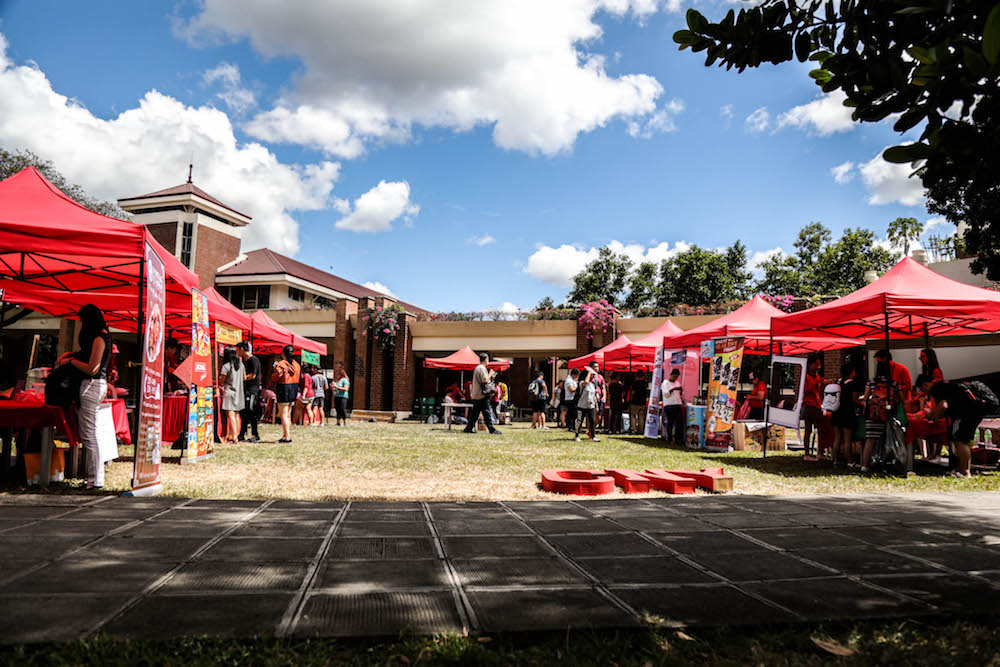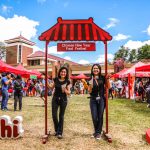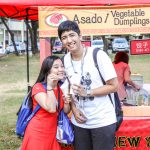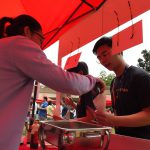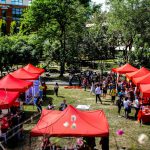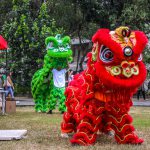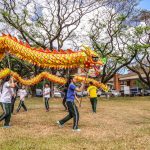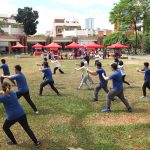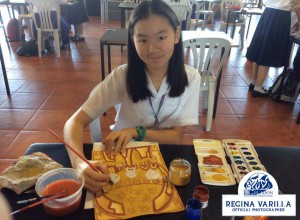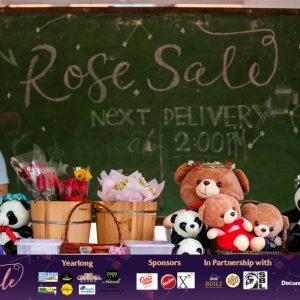Written by Aaron Brian Chua and Edited by Dave Ong & Joel Lim
Photo header by Jerry Feng
Sweet, savory smells wafted through the Ateneo de Manila University as the 2018 Chinese New Year (CNY) Food Festival comes our way. As one of the premier projects organized by Ateneo Celadon, the sprawling SEC field in the middle of campus filled in with students eager to grab a bite of the complimentary delicacies offered in the fair grounds.
This year’s CNY Food Festival was held in Sec Field of the Ateneo de Manila University for the first two days of March. On the early morning of the first of March, many people from the Ateneo community fell in line to be able to have a taste of some of the best and most famous Chinese food in town. However, before they lined up to get food, people had to register first on the booth near the entrance and claim the utensils they would need. Among these items, were the traditional Chinese chopsticks. The history of chopsticks date back to the ancient times of Chinese civilization. Rumor has it that they were first used by the ancient Chinese to dip vegetables into the soup when spoons proved difficult to use. Since then, chopsticks have been a major part of the Chinese culture.
Beside the register booth was the Chinese vegetable delicacy called Bok choy. This vegetable has the same pronunciation with “bái cài” which means wealth. Today, Bok choy is served during a meal as a symbol of welcoming wealth.
In another booth, we can find one of the more well-known Chinese dishes, the famous Chinese tikoy. It is often given every Chinese New Year celebration. According to Chinese mythology, it was offered to the Kitchen God so that he would have a sticky mouth and he won’t be able to report negative things about the family that offered him tikoy.
Sweet & sour dishes originated from the Chinese province of Hunan. Different types of meat can be used for the dish mentioned. However, the organizers decided to use fish for healthier reasons, since its meat reduces the probability of having of heart attack, protect bones, prevents the occurrence of cancer and slow down the aging process. The distinct mixture of the sweet and sour taste made this dish appealing not only to the Chinese community, but to everyone in the Ateneo.
The ear-shaped veggie dumplings also caught the curiosity of the Ateneo community. Each ingredient inside this dish represents something: the celery represents the industriousness and wealth, the cabbage symbolizes blessing for a well-off life for many years, while the mushroom denotes increasing wealth and luck. Lastly, the fish and beef stuffing represents wealth and strong economic growth.
Char siu, or most commonly known as asado, literally means pork burn or roast. It is commonly served with a bun, noodles, or with rice. It can also be found in siopao or cold cuts. This dish is not new to the Ateneo community; thus, made it easier to convince the Ateneo community to try it out.
According to history, Chinese were the ones who brought noodle-based dishes to the Filipinos. The emergence of different pancit was due to the influence by the Chinese traders at that time. Due to that reason, the organizers believed that letting people try authentic dry wonton noodles was important to let people compare the similarities and differences of Chinese noodles and local noodles.
Facts such at these were strewn about the festival in order to feed students’ minds in order to complement their fed stomachs. The 2018 CNY Food Festival celebrates more than just the food, but also the culture attached to it.
“More than the delicious taste of food, the food fest shares the history and meaning behind each delicacy. This event serves as a connection for the Filipino and Chinese culture,” ME freshman Kandice Mae Ang proudly said.
Political Science freshman Hazel Carpio added, “Bringing CNY food fest to Celadon has not only brought my home away from home but most especially, it allowed my fellow Ateneans, my friends, to have a glimpse, taste and somewhat understand my background, my race and my home.”
To cap it all off, fun games and performances were held on the grounds to liven up festivities. Different games like the chopstick challenge, popsicle challenge, and a chubby bunny featuring hopia never failed to put a smile on students’ faces.
Students from St. Jude Catholic School gave the Ateneo community a glimpse of their own lion and dragon dance. They performed along the SecWalk and at Sec field. Lion and dragon dance performances are believed to bring luck for the incoming year. A Tai Chi class led by Sir Ramil Iriola provided the Ateneo community a wonderful tai chi exhibit. Moreover, third-year DipIR student Nicole Chiang serenaded the Ateneo community with her amazing voice.
“We reached our goal of having more than a thousand people visit our event. Our goal really was to share to the people Celadon’s advocacy, which is nationhood through culture-sharing. We wanted Ateneans to celebrate the Chinese New Year with us, and we used food as the medium because it’s a big part of our traditions,” recounted Angela Chua, one of the three project managers of Celadon’s Chinese New Year celebrations. “It was fulfilling being the project manager for this because of the feedback we got from people. I was happy that we were able to give people the experience of celebrating the holiday with their friends with good food and good music.“
Co-manager Shaira Santiago adds, “It’s the idea of sharing the culture through food which is loved by a lot of people that made me think that this could be a great avenue wherein Celadon can reach out to both members and non-members.”
“The best part of heading such a big project like CNY is that the long preparation plus the several deliverables that need to be done has brought the core team closer to each other,” reflected Ongchan on his experiences co-heading the Food Festival. “I like seeing my core team gain new friends through sharing experiences together. After all, this is what Celadon is all about, gaining a new family and sharing home.”
The 2018 Chinese New Year Food Festival was not just about the food. It’s also about the memories made, information learned, and appreciation to the distinct culture of different countries. This event also taught people that there’s more to life in exploring, trying new things, and breaking out of their comfort zones – all while filling up their hungry stomachs.
For more information, check out Celadon Chinese New Year Festival’s Facebook page!
Check out articles of previous CNY celebrations:

